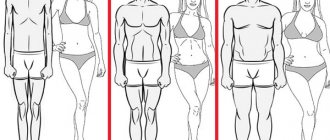We all perceive the world around us differently: some pay more attention to the appearance of people or things, some are fascinated by sounds, and some will not be able to form a complete impression of an object until they touch it.
Psychologists divide people, depending on their way of perception, into 4 categories: visuals (evaluate the world with their eyes), auditory (prefer to focus on hearing), digital (their logical mind comes first, and then everything else) and kinesthetics (connoisseurs). tactile sensations). How to understand that this is a kinesthetic person and how to find a common language with him?
Characteristic features of a typical kinesthetic person
Find out what awaits you today - Horoscope for today for all zodiac signs
Due to numerous requests from subscribers, we have prepared an accurate horoscope application for mobile phones. Forecasts will arrive for your zodiac sign every morning - it's impossible to miss! Download for free: Daily Horoscope 2020 (available on Android)
In childhood, the lion's share of people belonged to the kinesthetic type - after all, a child learns about the world through touching various objects, also trying to taste them.
Usually, in the process of growing up, the physical perception of the world slows down, and other methods come to the fore. But still, some people, even in adulthood, continue to perceive information from the outside mainly through tactile contact.
Kinesthetic – who is he and what are his main identifying “symptoms”? Let's find out.
- for the most part, a representative of this type behaves quite actively: he is often in motion, touches surrounding objects, smells them, tastes them;
- the process of perceiving the world for kinesthetics is carried out mainly through physical sensations, the body is their main tool that allows them to receive the necessary information;
- Kinesthetic learners vitally need maximum comfort and coziness around them. And now we are not talking about ideal cleanliness or order at all. Not at all - such a person can, for example, walk around in a suit that has long gone out of fashion, but which fits him perfectly, and the natural fabric gives him great pleasure when touching the body;
- A kinesthetic person always monitors the air temperature in the room they are in, because if it is too hot or, conversely, cold, they will begin to experience severe discomfort. Likewise, he can be very irritated by certain odors;
- these people unconsciously try to reduce the distance in communication - they come as close to the interlocutor as possible, accidentally touch his hand or shoulder. If this is a typical kinesthetic person, then you should not regard such gestures as manifestations of sympathy, obsession, or even less sexual interest - in this way he is just maintaining a conversation;
- touch people are not very strong in making plans for the future; they always prefer real actions to them. And when representatives of other psychotypes have not yet “swinged up” and are in the process of thinking, kinesthetics are already desperately eager to fight. And long waits and downtime can really unsettle them;
- in the same way, they hate having “meaningless” (in their opinion) conversations for hours, discussing problems if they cannot be solved in a practical way. They consider this a senseless waste of precious time;
- In order for a kinesthetic student to be comfortable, all things in his home or workplace should be located in their usual places. Although in appearance there is often an impression of complete chaos, in reality all objects are placed in a logical order that is understandable to a kinesthetic reader, so that he can always pick them up without difficulty;
- a kinesthetic person is a person who predominantly remembers the general impression of what happened, while minor details are often ignored;
- in most cases, connoisseurs of tactile sensations get along well with their body, know how to control it and correctly understand its signals;
- Mostly kinesthetic people behave reservedly in society and do not like to talk much. The fact is that they easily immerse themselves in the world of their own internal experiences and sensations, which from the outside looks like they have “gone into themselves” and stopped listening to you. If you notice such signs when communicating, there is no need to be nervous and angry with the kinesthetic learner - it’s better to lightly touch him and he will instantly “come down to earth.”
Interesting point. Do you see how a kinesthetic student is sad about something and want to please him? The best thing you can do is to embrace him in your arms. Then he will feel that he is cared for and will stop worrying.
Characteristics of personality type
How to change yourself and your character for the better
How to determine kinesthetics:
- When communicating, he practically does not look into the eyes, chooses a certain point and concentrates attention on it, usually his gaze is lowered;
- Tries to immediately begin action and does not tolerate slowness. Sluggishness leads to irritation;
- The speech is filled with phrases describing the external characteristics of an object, for example, warm, slippery, smooth;
- Every meal turns into a ritual, it is important to feel every bite and enjoy it to the fullest;
- During a conversation, he can switch off, as he is prone to constant internal experiences.
Who is a kinesthetic person, the main manifestations in appearance:
- Old clothes, worn-in shoes, because they are comfortable and familiar. After all, comfort comes first for him;
- Fussy movements, constantly feeling the need to touch something, stroke the surface of the table or feel the edge of the tablecloth;
- Facial wrinkles near the nose, hostility and aggression are often expressed by a grimace of disgust.
Disgust
A kinesthetic person is usually a calm and balanced person. Such people do not stand out from others because they do not feel the need for everyone's attention. They are comfortable in their environment. They are often attacked by a melancholic mood, but it also goes away suddenly.
Kinesthetic woman
A kinesthetic woman is sensual and emotional. She is easily vulnerable, but undemanding. Social status is not important to her, the main thing is how she feels. If she is comfortable and comfortable, she is happy. In her actions she relies on intuition, she is open in communication, therefore she easily makes contact and rapprochement. Such a woman is kind and affectionate and easily attracts men.
Kinesthetic women do not like to have long conversations; they prefer to relax and enjoy every moment of life. Physical contact is important to them, so that close people are nearby.
Note! Women act immediately, without wasting time on thinking, especially if their intuition tells them that this is the right step.
Kinesthetic man
Kinesthetic men always greet people with handshakes or hugs, because touch is important to them. They usually choose one person for communication; they do not feel the need to be the center of attention. They appreciate delicious food and drinks.
Psychological portrait of a kinesthetic man:
- It is difficult for him to hide his emotions and feelings. Even if he tries to be indifferent, his state of mind is visible to others;
- He is impulsive, quick-tempered, but also cools down quickly;
- A man demands respect for his feelings, which exist only in the present moment, for them there is no past or future;
- He is a man of few words, he would rather remain silent, but he will express his feelings through actions and touches.
Child is kinesthetic
All children are kinesthetic learners. At first, they can only experience the world through touch. They touch surrounding objects, taste them, recognize their mother by smell. Gradually, new opportunities for interaction with reality appear. Kinesthetics fade into the background, but not for everyone. Some remain dependent on tactile contact.
Features of child kinesthetics:
- It is better to remember new things while moving; what remains is not a detailed perception, but a general impression;
- Free time is spent doing physical activities, running, jumping;
- Easily distracted because it is difficult for him to concentrate;
- When talking, looks down, especially when starting a dialogue;
- He perceives information better through physical contact, for example, when his hand is held.
Child holding hands
How to identify kinesthetics by communicating with them
In addition to the fact that the bearer of this psychotype will try to touch his interlocutor, there are a few more tips:
- A kinesthetic person regularly uses words in speech that characterize various bodily or taste sensations, for example, “hot”, “cold”, “salty”, “prickly” and so on.
- Usually such people direct their gaze downward when communicating. In general, it should be noted that they rarely look directly into the eyes of their interlocutor.
A spicy nuance. During sexual games, kinesthetics prefer to turn off the lights in order to shift the focus of attention to tactile sensations as much as possible. They get great pleasure from massage, stroking, and kissing.
Character traits
Definition of kinesthetic:
- When speaking, avoids eye contact, in most cases concentrates on a specific object and usually looks down.
- Prefers to act instantly, gets irritated by slowness.
- When communicating, he describes the external characteristics of an object: black, cold, heavy, and so on...
- When dining, he enjoys every type of food.
- When conducting a dialogue, he can disconnect from the tendency to immerse himself in his experiences.
Kinesthetics have certain external features:
- They stick to wearing worn-out clothes and familiar shoes, giving preference to comfort and familiarity. Comfort is prioritized over other issues.
- Fussiness in movements, constant desire to touch everything, feel the tactility of sensations.
- Lots of facial wrinkles in the nose area. Aggression and hostility are mainly expressed in the form of a change in facial expression with a demonstration of disgust.
By nature, this type of person is calm and balanced. Due to their lack of desire to be the center of attention, they do not stand out from the rest. Their comfort zone is their own environment. They have a tendency towards a melancholic mood, but they quickly get rid of it.
Kinesthetic woman
First of all, let's talk about representatives of the fair sex who belong to this type of perception. They are the ones who sign up for massage sessions more often than other women, love to visit the jacuzzi, and going to the hairdresser is a real pleasure for them.
After all, there the master gently touches their hair, combs it, dyes it, blow-dries it, and all these actions are accompanied by tactile sensations. It is not surprising that kinesthetic girls usually look very well-groomed and carefully take care of their skin and hair.
They are also popular with the stronger sex due to their increased affection and tenderness: they adore kisses and hugs, and are always happy to give a pleasant massage to their chosen one.
In relationships they tend to be romantic. But in clothing, between beauty and comfort, they will definitely choose the latter. If such a girl finds it difficult to walk in high heels, then she will prefer comfortable sneakers. And she will never part with an old, but so soft and fluffy sweater for anything in the world. Even if there are a bunch of other outfits hanging in the closet.
Recommendations for working with kinesthetic children
- It is very difficult for a child to sit still for a long time. We need to provide him with motor relaxation. He can go get some chalk and write something on the board.
- Two people will understand each other if they speak the same language. It’s the same with kinesthetic learners. Gestures, touches, and the typical slowness of mental operations will help them.
- Such students learn through memory. Exaggeration promotes memory.
- The child will respond to the teacher's remark if it is accompanied by a soft touch on the shoulder.
- He will better perceive the material that was recorded.
- Practical activity (construction, experiment) is the most productive activity in the lesson.
- Physical activity is important for a student. The more energy he spends, the more successfully he will prove himself in other areas of life.
The kinesthetic learner acts, checks and analyzes. It learns by memorizing algorithms. It is important for him to understand why this or that rule is needed. What's the use of the theorem? How will it help you in life? When working with kinesthetic children, you need to give them answers to these questions and show them the scope of practical application of the material being studied.
Under no circumstances should other channels of perception be neglected. They need to be used to the maximum. It is important to be patient and still explain, show again and again. The effectiveness of the learning process directly depends on the number of open channels and the level of their development.
Male kinesthetic
Such men pay little attention to the visual appearance of a woman. When choosing a chosen one, they focus more on the shape of her body - it is important for them that touching it is pleasant. They love soft, velvety skin and a pleasant, but not too intrusive aroma of perfume.
This man pays enough attention to his appearance: he gives a comfortable haircut, and you can often catch him in a manicure chair or a massage therapist’s office.
But, just like ladies of this psychotype, they wear clothes that are as comfortable as possible, and will not chase fashion brands. He doesn’t talk much in relationships; he always describes his physical sensations in great detail.
How one or another type of perception is formed
The predominant type of perception is an innate property of the individual. However, it can be changed if you purposefully stimulate the work of certain analytical systems of the child.
| Psychotype | Formation conditions | Example |
| Audial |
| A man and woman of different nationalities got married. When their child was born, they decided to speak two languages with him so that the child would be prepared to communicate in the homeland of his mother and father. As a result of the fact that from birth the baby perceived a lot of information by ear, the auditory channel of perception became dominant in him. |
| Visual |
| In a family with two sons, a girl was born. Mom, wanting to instill good manners in her daughter, taught her to be neat from childhood, encouraged her to take care of her appearance, keep her clothes clean and choose matching things. This girl later became a designer, since she had a well-developed sense of color and composition, and it was easier for her to work with clarity than to imagine herself in some other field of economic activity. |
| Digital |
| In a family of lawyers, it was customary to discuss and think about any decisions. Since childhood, the boy was accustomed to family negotiations; he liked to read detective stories and solve puzzles. Having become an adult, he solves all life’s difficulties only from a position of logic and careful analysis. |
| Kinesthetic |
| Parents noticed that their daughter could not wear clothes made from fabrics such as wool and linen. She complained that “the sweater itches” and “the shirt rubs the skin.” Mother washed things with air conditioner, but the situation did not change. In addition, the girl often complained that her room was too cold or stuffy. The parents believed that their daughter was capricious, but the school psychologist suggested that the girl was a kineticist, which is why different types of sensations were so important to her. |
Kinesthetic child
Kinesthetics - what is it? It is a way of perceiving the world, laid down from the first years of a person’s life. All children explore the surrounding reality through touching, squeezing objects, and also strive to taste all the toys. A true kinesthetic learner can be determined when a child attends grades 2-3.
This baby still shows a desire to touch all objects. It’s easier for him to show something than to tell him about it. In games with classmates, he often pulls girls' pigtails, hugs and kisses his friends.
Kinesthetic children show great impatience in science lessons when they are shown various models and try to study them on their own. But, it should be noted that at primary school age it can be difficult to understand whether a child really belongs to the tactile type of perception of the world or whether he is simply hyperactive and restless. Both phenomena have similar symptoms.
It’s interesting that if a kinesthetic child slouches, you will not be able to force him to straighten up by any means. At least show a thousand photos from the Internet, at least cite scientific facts that stooping is harmful to health. He won't care, because he feels comfortable in this position .
Such children enjoy using their body by conducting various experiments with it. For example, they may alternate between trying to write with their right hand and then with their left hand. Parents are often asked to send them to swimming, dancing, gymnastics or any other type of physical activity.
It will be useful for parents of kinesthetic learners to listen to the following recommendations, which will facilitate the process of assimilation of knowledge by the baby:
- for better concentration, it is worth making visual aids for lessons in the form of layouts or diagrams - so that a little kinesthetic learner can more easily absorb information;
- such a child may demonstrate a very non-standard approach to learning: for example, he simultaneously runs and solves a math problem. You shouldn’t scold him, he has his own methods;
- You definitely need to sign him up for sports, because thanks to physical activity he begins to feel much better;
- ideally, send such a child to a specialized school with an emphasis on physical development;
- You can study poetry or theoretical material with him when he does exercises - the knowledge will be absorbed.
Auditory, visual, digital and kinesthetic
Each person is an individual person who perceives the outside world differently.
- Someone listens to every word, timbre of voice, and perceives information better by ear. This is audio .
- Some people focus on color, shape, appearance. Such people are called visuals .
- A digital person is a person who primarily perceives the world through logical thinking, paying less attention to perception through analyzers (eyes, ears, hands).
- A kinesthetic person is a person who perceives the world by touch, tactilely.
In addition to the specifics of the main channel through which information is received, auditory, visual and kinesthetic learners differ from each other, for example, in the method of learning that must be used for an effective result, and in their manner of behavior.
Ideal profession kinesthetic
When choosing a future job, such a person should consider those options where he can receive physical contact. After all, kinesthetics are people of action, not thinking.
A job in which they will constantly feel their body is ideal for them. Thus, tactile individuals become successful athletes, dancers, massage therapists or tasters.









